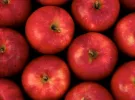
From 2014 there has been a Russian import ban on European and American apples. Since then, the Russian government has put a lot of money into stimulating the top fruit sector. For the time being, however, the Russian apple and pear growers are unable to meet the market demand. It has also risen over the past year as the Russian population has upgraded their diet to more quality products, including fresh fruit.
In 2019, the Russian government financed a support program for Russian agriculture and horticulture of 311 billion euros. Grants were given for the construction of new orchards, for the construction of (cooling) storage facilities and the establishment of seed improvement centres. Crop protection products were also sponsored, as well as other operational needs.
Despite all these efforts, several factors continue to limit the development of the Russian horticultural sector. First of all, the Russian horticultural sector is still lacking productive plant material. The Ministry of Agriculture estimates that Russia produced about 24 million plants in 2018. At the same time, Russia imported 25 million plants in 2018 and 21 million plants in the first six months of 2019.
The country has an official register of more than 3,722 fruit and berry varieties, of which more than 92% are of Russian origin. However, there are very few farms that grow planting material for commercial orchards, so the quality of the planting material in Russia is still insufficient in terms of yield, winter resistance and drought and disease tolerance.
As the ruble continues to weaken, Russian growers are still faced with very high costs for the import of planting stock and other related items for cultivation, such as pesticides, technology and equipment.
A lack of qualified agronomists is another factor holding back the industry.
The current Russian trend to eat healthily has led to increased fruit consumption. With the Covid-19 outbreak, more and more people are paying attention to their health and eating patterns are increasingly focused on more natural and healthier foods. According to analysts, the demand for fruits and vegetables has increased during the Covid-19 pandemic. At the same time, fruit consumption is closely linked to household income and market prices. Russia's disposable income has been declining since 2014, although there was some growth in 2018 and 2019, it is expected to decline again. In 2020, disposable income is expected to fall by 3%, according to the Ministry of Economic Development.
